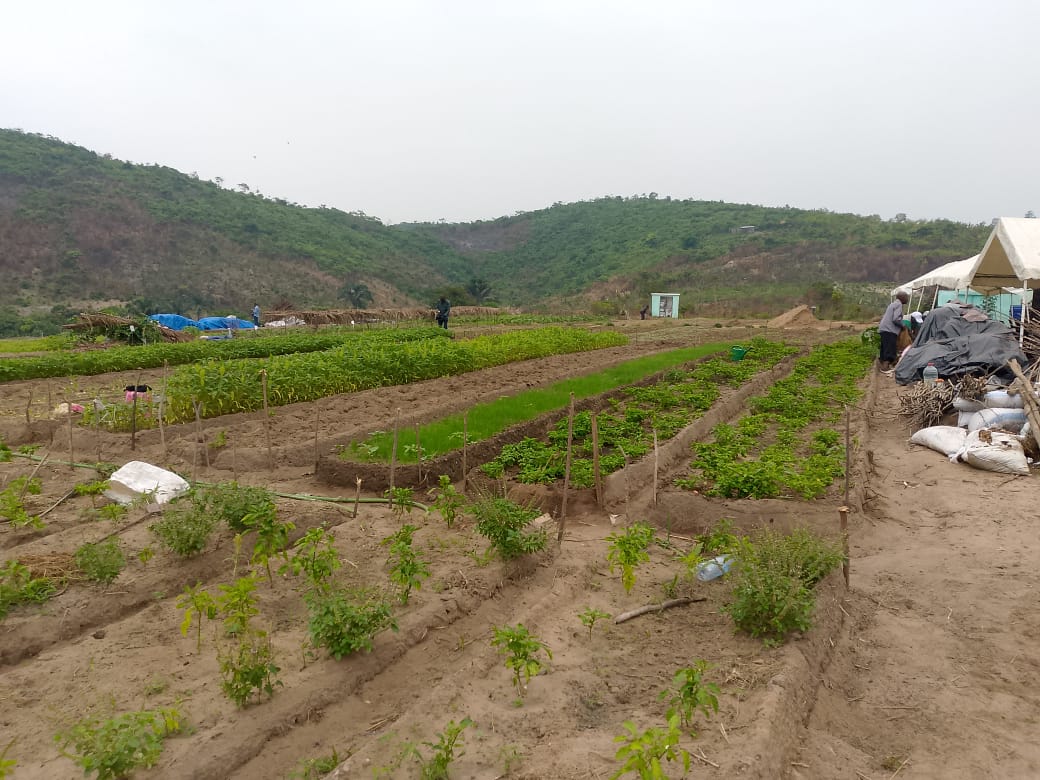Kélé-Kélé launch signals agriculture policy recalibration
Kélé-Kélé converts debt into productive assets and targets import substitution as Congo manages thin reserves; EMB tracks frontier spreads while DXY strength and CL=F volatility frame inflation and FX-risk tests for scaling into 2026–2027.

The Republic of the Congo’s 21 October 2025 inauguration of a seven-hectare agro-ecological market-garden site at Kélé-Kélé, roughly 20 kilometres south of Brazzaville, signals a measured shift from import-dependent urban food supply to production-led resilience financed through debt-for-development conversion. The timing and structure point to a policy mix that prefers capital formation over recurrent subsidies, anchoring credibility on delivery rather than promises.
The macro baseline is constrained: nominal GDP about $15.7 billion in calendar 2025, real growth near 2.7%, headline CPI tracking low single digits with an end-2025 pace around 3.4%, and a public-debt ratio in the mid-90s percent of GDP. Foreign-exchange buffers at the sovereign level are thin, with the broader CEMAC reserve pool supporting external liquidity. Within these limits, incremental, replicable capacity adds matter for inflation dynamics, current-account leakage, and investor assessment of execution risk.
The site is engineered for predictable output and cash-flow stability. One hundred twenty-six smallholders—eighty-one women and forty-five men—received 340 m² plots serviced by a deep-well system, motopumps, elevated water towers, and erosion-control works. Crop plans emphasise short-cycle vegetables—tomatoes, aubergines, courgettes, peppers, leafy greens, okra—selected for rapid turnover and water efficiency.
Using conservative agronomic benchmarks of 3.0–3.5 kilograms per square metre per cycle and three cycles per year, the allotted 42,840 m² supports annual production of roughly 386–450 tonnes. Normalised to the full seven-hectare footprint (70,000 m²), potential output rises to about 630–735 tonnes when common areas are phased into cultivation. This calibration tightens earlier overestimates and sets a verifiable base for evaluating import substitution and price effects.
Transmission runs through three defensible channels. First, price stabilisation: reliable local volumes compress seasonal spikes in the food component of CPI, which is highly sensitive to transport and energy. Second, incomes and employment: structured irrigation, input stewardship, and extension services lift labour productivity relative to informal plots and formalise cash-flow cycles that can be financed by working-capital lines. Third, external balance: import substitution at 600–700 tonnes per year saves low single-digit millions of dollars in annual foreign-currency outflows, a meaningful contribution given narrow reserves and a firm U.S. dollar (DXY) that raises local-currency import costs. Together these effects marginally lower risk premia across sovereign and bank curves, improving the case for credit allocation to peri-urban horticulture within broader agrifood value-chain finance.
The financing structure clarifies intent. Converting bilateral obligations into capital expenditure hardens the link between debt and growth, improves the quality and duration profile of liabilities, and embeds partner oversight into delivery. For investors tracking frontier sovereigns where hard-currency funding remains expensive—proxied by EM high-yield composites such as EMB—debt-for-development functions as a counter-cyclical buffer when market access is costly. The project also aligns with ESG mandates that prioritise climate-resilient irrigation, soil conservation, and gender inclusion, broadening the base of potential co-financiers for subsequent phases without adding immediate pressure to commercial borrowing lines.
Regional and global context strengthens the case for replication. Central African peers have struggled to scale peri-urban clusters with consistent irrigation and governance, while West African pilots often span 20–50 hectares but underinvest in water infrastructure, constraining yield stability. Congo’s approach is smaller per site but designed for repeatability, allowing a portfolio build-out that diversifies operational risk across locations. Exogenous shocks remain binding constraints: crude-oil volatility (CL=F) and shipping costs can re-ignite imported food inflation; a firm DXY can tighten local financial conditions; and frontier hard-currency spreads can widen on risk aversion, raising the bar for concessional co-financing. These global pressures explain the strategy’s emphasis on supply rather than broad price controls.
Markets will treat Kélé-Kélé as an execution test with near-term, observable metrics. By mid-2026, plot-level yields should average at least 3.0 kg per m² per cycle with irrigation uptime above 95%, and no fewer than 120 of 126 plots should be in continuous production. By 2027, wholesale-market data should show a measurable rise in the share of locally sourced vegetables and a narrowing in the standard deviation of monthly food-CPI changes by roughly one-third versus the 2022–2024 average, conditional on logistics and off-take contracts.
If these thresholds are met while the public-debt trajectory improves and the current account steadies, the pilot will have demonstrated that Congo’s debt-for-development pivot compresses food-price volatility, lowers FX leakage at the margin, and raises institutional credibility to mobilize additional blended capital for a scalable peri-urban agriculture portfolio.





